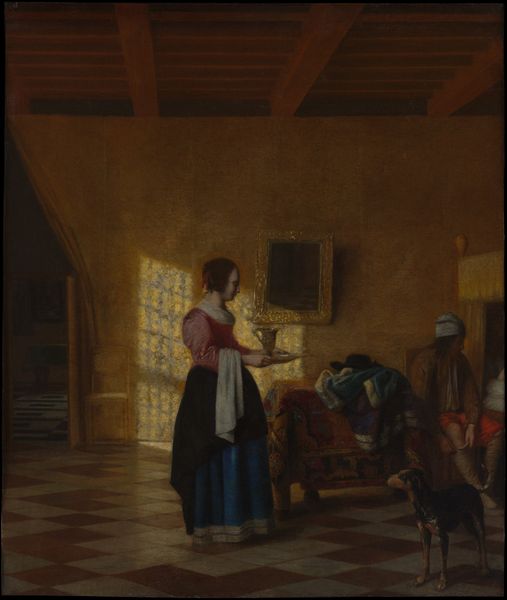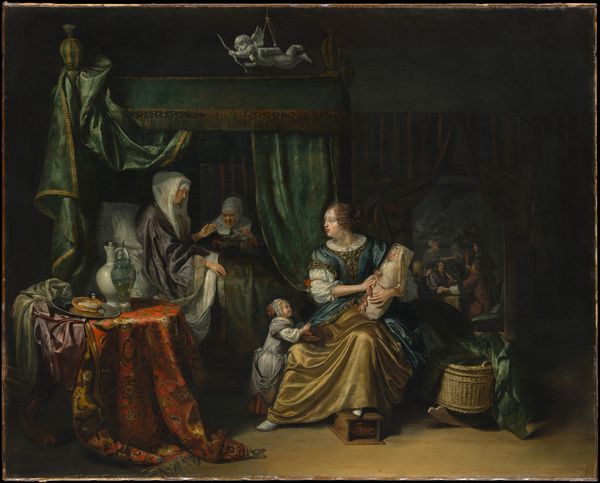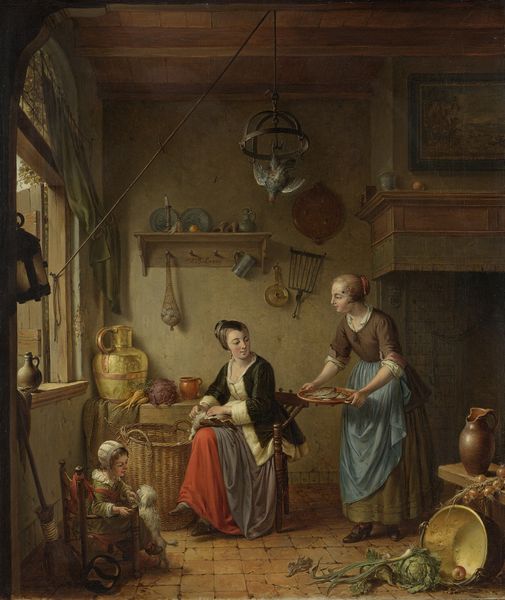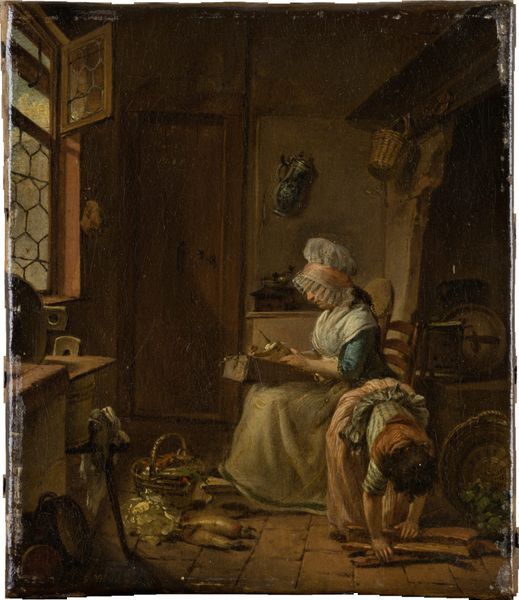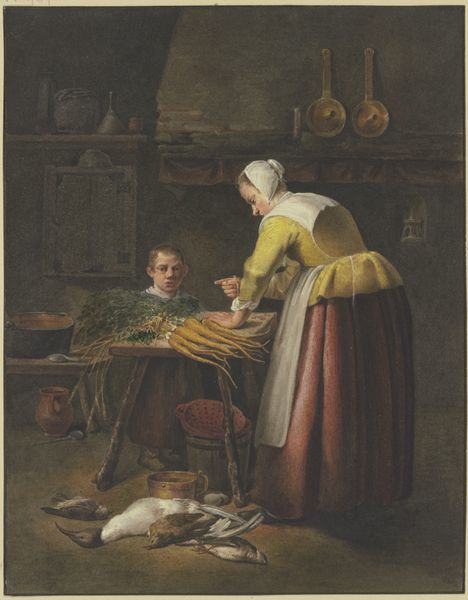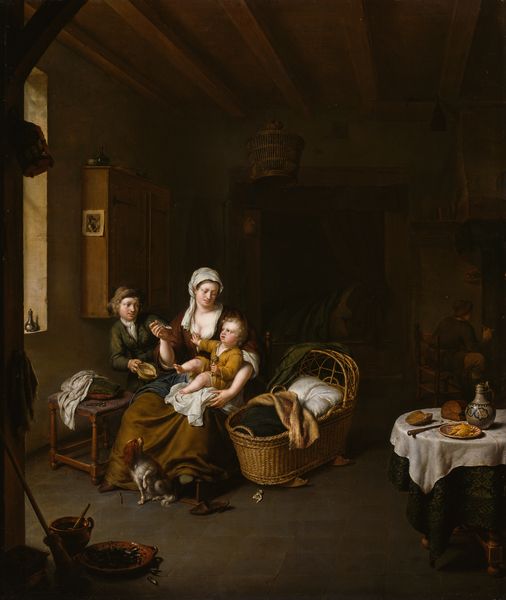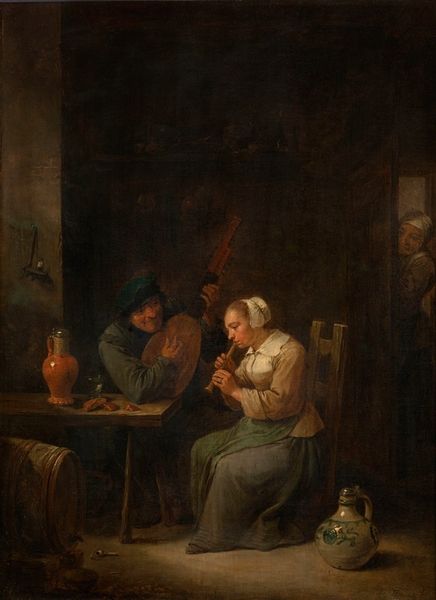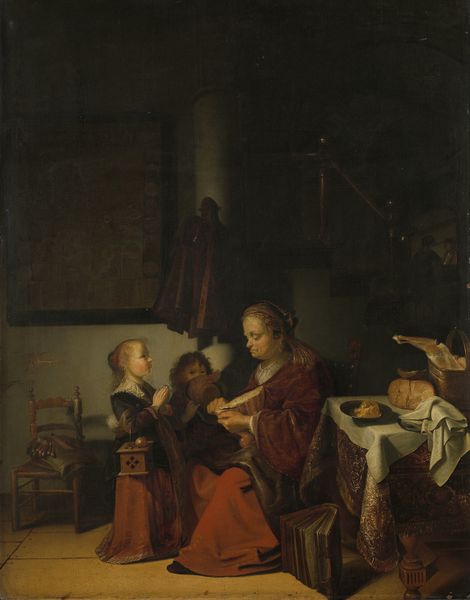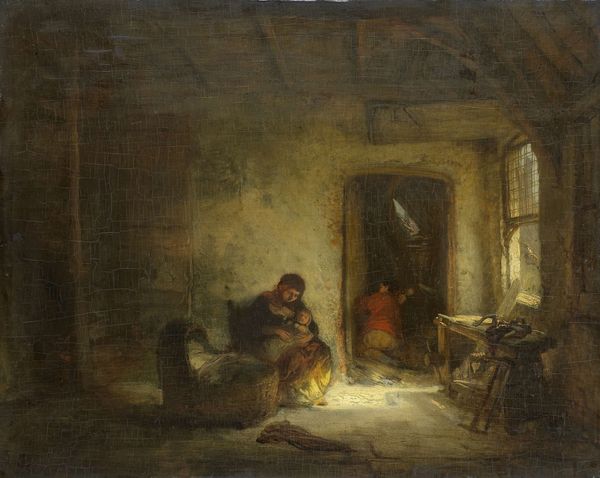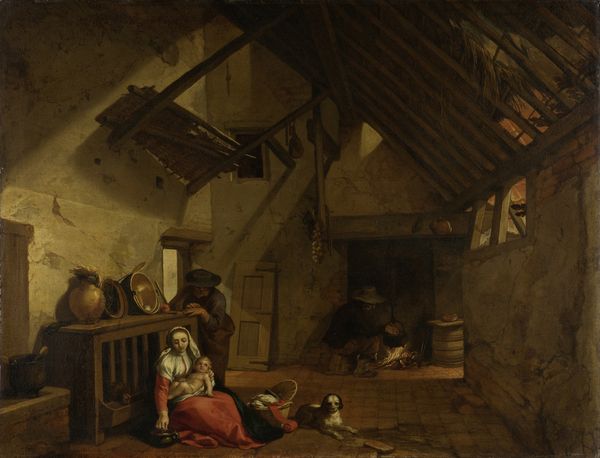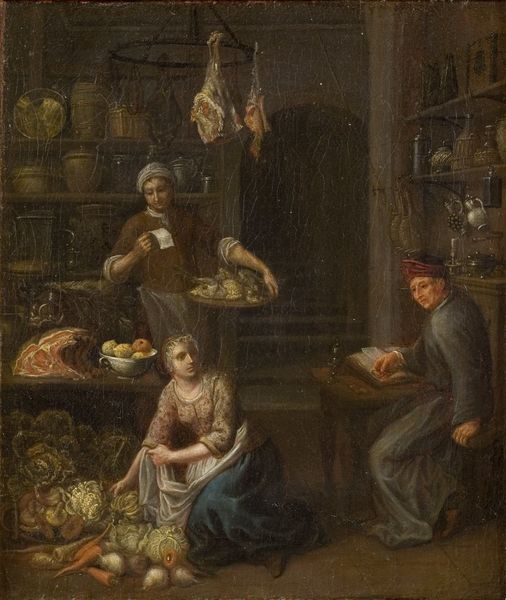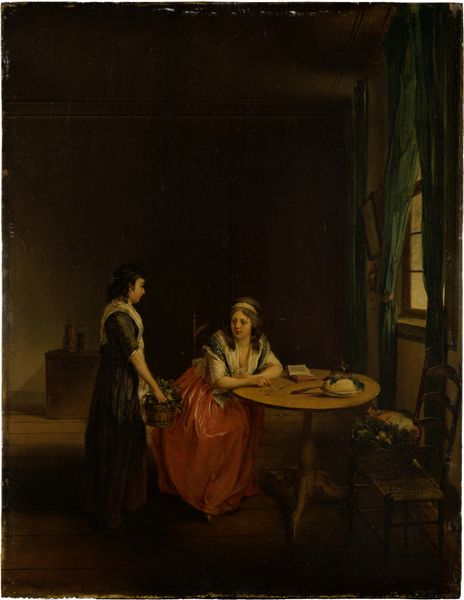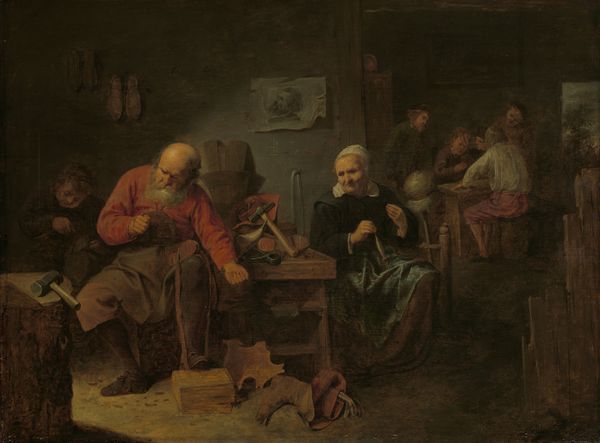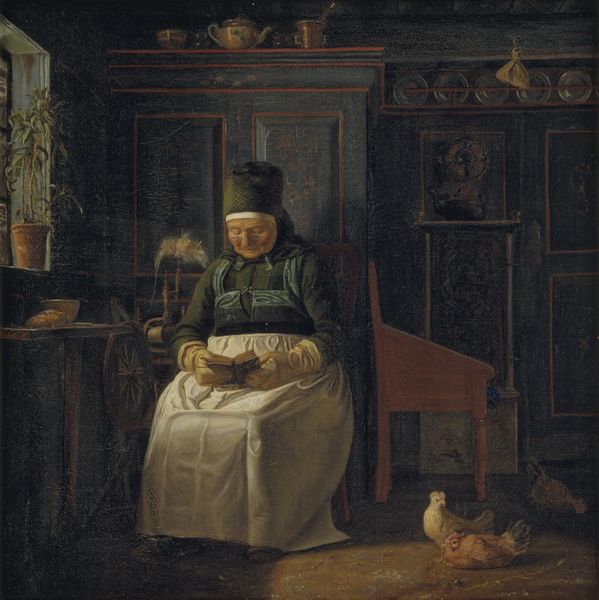
painting, oil-paint
#
narrative-art
#
dutch-golden-age
#
painting
#
oil-paint
#
genre-painting
Dimensions: 20 1/2 x 17 3/8 in. (52.1 x 44.1 cm)
Copyright: Public Domain
Curator: Hendrick Sorgh’s “A Kitchen,” painted sometime between 1638 and 1648, depicts a domestic scene rendered in oil on canvas. It is currently housed at The Metropolitan Museum of Art. What’s your first reaction? Editor: The initial impression is one of intense domesticity, almost oppressive. The women seem trapped in the quotidian, enveloped by the heavy browns and grays of the space. Curator: That sense of enclosure is fascinating when considered in the context of Dutch Golden Age painting. Genre scenes like this served a particular social function, often reflecting idealized versions of domestic life but also, sometimes, carrying implicit moral messages. This focus on the female role in managing the home economy was important, it provided order and it also was something that only upper middle class individuals had the pleasure of seeing it or participating. Editor: Absolutely, and let’s not ignore the gaze. These women aren't just present; they are performing. Are they being looked at or just existing in that domestic space? Considering the probable male viewership for these paintings originally, it provokes questions of labor and its perceived value through a male perspective. The image feels constructed for that male gaze. Curator: Good point, these genre scenes reinforce and establish the household hierarchies and patriarchal authority during the time. They showcase both the visible aspects of a house, like in here the women who work at the kitchen, while invisibilizing others who made possible for those families to succeed at this period in history. Editor: What’s also important here is looking at those hierarchies beyond class lines, for the female figure presented closer to us she is bending almost painfully suggesting that she needs to do way more labor to attend the higher social standards that were in play here. It feels urgent that we recognize the different struggles and not consider all of these figures the same just because the painter represents all of them with “similar clothing.” Curator: Precisely. Looking closely reveals so much more. Thanks to this exploration, the piece now reads as not simply a "kitchen scene," but as an interesting historical point within complex power structures and expectations during the time. Editor: Agreed! I think it's imperative to push against that neutral perception of past representations, making space for new perspectives.
Comments
No comments
Be the first to comment and join the conversation on the ultimate creative platform.
